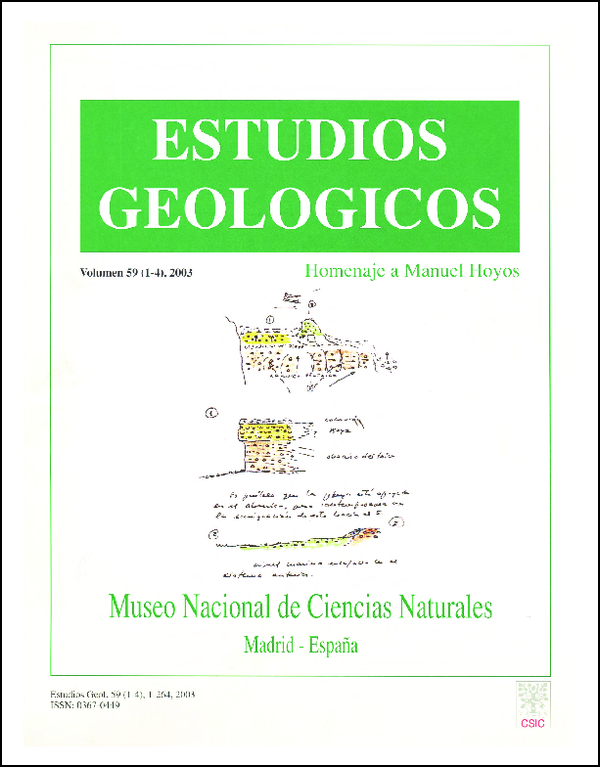El cuaternario del Valle Inferior del Manzanares (Cuenca de Madrid, España)
DOI:
https://doi.org/10.3989/egeol.03591-488Keywords:
Fluvial terraces, Geomorphology, Pleistocene, Manzanares river, Madrid BasinAbstract
This paper examines the lower reach of the Manzanares river valley between Villaverde and its confluence in the Jarama river. In this zone the valley is asymmetric with the development of large escarpments (on gypsums) at the left bank and extensive fluvial terraces on its right one. Among the different fluvial levels the most representative is a complex (thickened) one labelled as TCMZ (+ 16-22 m). This terrace is constituted by at least five fluvial meandering sequences composed of white arkoses (Mz). Younger sequences of mixed nature (arkoses + lithoarenites: Mx levels) develop between + 15 and + 8 m, overlapping the TCMZ, and displaying a more braided character. During the development of the different Mz and Mx levels there was a relevant participation of lateral deposits coming from the main tributaries (Butarque and Culebro), gypsum escarpments (colluviums) and/or from the reelaboration of earlier terrace scarps (glacis). The TCMZ is the highest terrace leve1 in this sector, working additionally as the watershed of the Manzanares river valley (another anomaly). Al1 these anomalous characters are consequence of the system response to the river capture of the Manzanares by the Jarama river during the middle Pleistocene. The palaeontological and archaeological content of the TCMZ suggest that this thickened terrace developed between the OIS 10 (?) and OIS 5. A relevant paleoseismic crisis during the early OIS 5 predates the first major incision period after the river capture. Cold resistant faunas and mousterian relics are characteristic in the Mx terrace levels, being possible to assign their development between the OIS 4 and OIS3. Whatever the case, the intervening cut & fill episodes shaping the fluvial landscape during the Late Pleistocene, hardly can be related to eustatic changes in the Tajo river-mouth at Lisbon (ea. 650 km away). A realistic understanding of river valley evolution in the studied zone, should conjugate climatic changes (limiting the water and sediment supply during the end of cold periods) with relevant neotectonic and karstic activity, feedback by significant intrabasinal headward erosion processes from the late Middle Pleistocene.
Downloads
Downloads
Published
How to Cite
Issue
Section
License
Copyright (c) 2003 Consejo Superior de Investigaciones Científicas (CSIC)

This work is licensed under a Creative Commons Attribution 4.0 International License.
© CSIC. Manuscripts published in both the print and online versions of this journal are the property of the Consejo Superior de Investigaciones Científicas, and quoting this source is a requirement for any partial or full reproduction.
All contents of this electronic edition, except where otherwise noted, are distributed under a Creative Commons Attribution 4.0 International (CC BY 4.0) licence. You may read the basic information and the legal text of the licence. The indication of the CC BY 4.0 licence must be expressly stated in this way when necessary.
Self-archiving in repositories, personal webpages or similar, of any version other than the final version of the work produced by the publisher, is not allowed.















